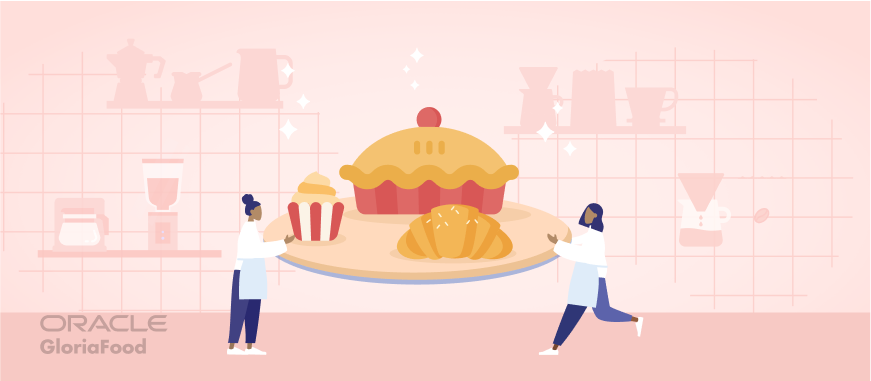If you are creating a menu for a new restaurant or updating a new one, you should dedicate a special place for appetizers. These are often the first thing a client orders so they will sway a customer’s opinion about your restaurant.
Appetizers have the main goal of stimulating the appetite and preparing clients for the meal to come. Check out this list of the most common appetizers at restaurants that will help you build a tempting menu:
How Many Appetizers Should Be on a Menu
Let’s start by discussing the total amount of dishes you should have on a menu. Long menus with a variety of dishes are not only hard to read, but they tell clients you prize quantity over quality. On the other hand, small menus have several benefits:
- It makes it easier for customers to choose: clients can often get choice paralysis when faced with too many choices and they will find it tedious to browse through a large menu;
- It is more cost-effective: if you have more dishes, you have to buy more ingredients and spend more money. You can limit yourself to a small number of menu items and use the same ingredient for more than one dish to reduce costs;
- It reduces food waste: when you buy a lot of ingredients, some of them will go bad before you get to cook them. With a limited number of dishes, you can have a better view of your inventory and never overstock;
- It allows you to focus on perfecting dishes: because your cook doesn’t have to cook a variety of different dishes in a day, he can concentrate on delivering perfect menu items every time.
Read more: Why Restaurants with Small Menus Are More Successful [+ Template]
The perfect small menu will have up to 15 menu items, fewer for quick-service restaurants. Now it is your choice how many of these items should be appetizers. Ideally, dedicate about four slots for amuse-bouches to tempt people into trying more of your food.
How to Highlight Appetizers on the Menu
People generally gravitate to the mains when ordering from a restaurant, so you need to find ways to persuade customers to also order appetizers. Here are a few tips that are guaranteed to work:
- Place them at the start of your menu: your menu should be organized into categories to make it easier to browse. The first category should be appetizers, so people won’t be able to miss them;
- Use photos to illustrate your appetizers: hungry customers won’t be able to resist a hunger-inducing photograph of your food. If you want to increase your online sales, adding images to your menu is a must because clients want to see what their food will look like;
- Have inviting menu descriptions: pair the photograph with mouth-watering descriptions that focus on taste, ingredients, and texture;
- Add allergens in the description: if you want to attract people who suffer from allergies to your restaurant, add the allergens present in the dish in the description;
- Mention the nutritional value: you can also tempt people who are on a health journey to order your appetizers if you add the nutritional value of each dish in the description;
- Create promotions for appetizers: the easiest way to persuade a customer to order an appetizer is to include it in a promotion. For example, you can offer 10% off the whole appetizer category, you can create a buy two appetizers, get one for free deal, or include appetizers in a meal combo with a main and a dessert.
Learn how you can add promotions at the top of your restaurant menu in just seconds:

Read more: How to Use Restaurant Promotion Templates Effectively to Boost Sales
You can do all of the above and more using the free restaurant menu creator from GloriaFood. It will only take minutes of your time to add an enticing menu to your website. Check out this tutorial:

Read more: Restaurant Menu Planning: How to Optimize Your Menu to Sell More
What Are the Most Common Appetizers at Restaurants
The type of appetizers you add to your menu will depend on your type of cuisine and price point. Use these examples of common appetizers at restaurants for inspiration:
- Loaded potato skins: top them up with bacon, cheddar, and onions to delight the tastebuds;
- Bruschetta: a delicious Italian snack that impresses with its fresh taste;
- Crab cakes: you can have a bunch of them prepared in advance so you can cook them fresh for every client;
- Chicken wings: a small portion of wings with a choice of sauce will delight every hungry customer;
- Sliders: mini burgers are a great choice for every moment of the day;
- Charcuterie boards: takes almost no effort to cook, you just have to pay attention to plating to impress clients;
- Dumplings: pan-fried or steamed, they make a great light appetizer;
- Quesadilla: easy to prepare with a small food cost and can be updated with the ingredients you have on hand;
- Onion rings: there is something very satisfying about a freshly fried dish;
- Mozzarella sticks: don’t forget to provide the option for additional toppings to increase profit margin
If you want to cut costs, check out these ideas for high-profit margin appetizers:
- Hummus with crudites: such as carrot and cucumber. You can also flavor the hummus with beetroot or paprika for a more unique dish;
- Chips and dips: try out different chips and provide a variety of dips such as guacamole, marinara, or ranch;
- Nachos: practically a different version of chip and dip with toppings. You can make it a bigger portion so people can share it.
Read more: 7 Most Profitable Menu Items to Include in Your Restaurant Menu
5 Star Restaurant Appetizer Ideas
If you run a fine dining restaurant or simply want to try more upscale dishes at your restaurant, get inspired by the following appetizer ideas:
- Lobster salad with beetroot
- Squid sashimi with avocado
- Baked oysters
- Shrimp tartar
- Fig focaccia
- Roasted artichokes with caviar
- Foie gras with rhubarb jam
- Sweetcorn panna cotta with crab
Final Words
Now that you know what the most common appetizers at restaurants are, it is time to create the perfect menu for your business and your clients. Don’t forget to track your sales to notice which appetizers sell best and try out new dishes if some of your menu items aren’t bought as often.
You might also like:
